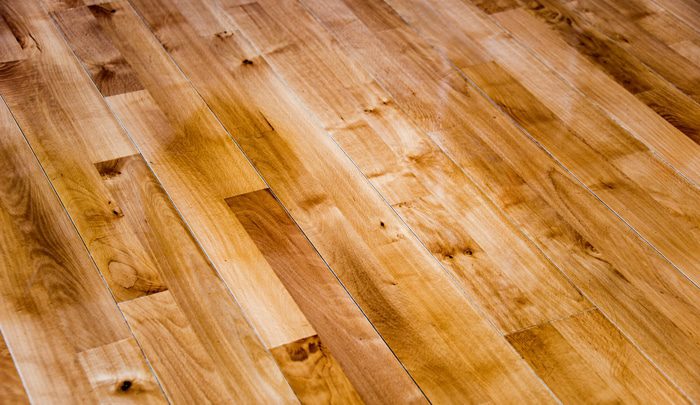
Originally popularized in the French royal courts of the 1600s, hardwood flooring remains the gold standard in flooring to this day. Known for its elegant beauty and strength, hardwood adds a natural design element, softness, and warmth to any space. When it comes to installing new hardwood flooring in your home or office, there is a lot to consider, and the experts at Absolute Flooring & Interiors in Santa Fe, New Mexico can help you make the right flooring decision.
TYPES
Hardwood floors are made of either solid wood or engineered wood. Solid wood floors have boards that have been milled into long planks, most commonly from a hardwood species. Each plank is one continuous piece of wood, which means it can be sanded and refinished many times over the course of its life. Solid wood floors require regular care, as the planks expand and shrink as the temperature fluctuates. Solid wood is more porous than engineered wood, and thus more vulnerable to damage and warping from humidity or water damage. Engineered wood floors are composed of planks made with a thin layer of hardwood adhered to a plywood core. The thin layer of hardwood means that engineered wood floors can only be refinished a couple of times, or possibly not at all, depending on the thickness of the hardwood layer. However, the man-made plywood core of engineered wood makes it more resistant to temperature-related shrinkage and expansion, making it more durable. Though less susceptible than solid wood, engineered wood is still not immune to damage and warping caused by humidity or water damage.
SPECIES
Another consideration when picking out hardwood floors is the species of wood. Each species has its own unique characteristics, from its hardness to its color. Wood hardness is measured using the Janka Hardness Rating: the higher the number, the harder the wood. High-traffic areas are better suited to harder woods, such as oak, hickory, or maple, as they hold up better to everyday wear and tear. Woods with a hardness rating on the lower end of the Janka scale (pine, spruce, fir, and cedar) are more easily damaged by continuous use, but, like their harder counterparts, can be sanded and refinished. Unlike the slower-growing hardwood trees, softer-wood trees are faster growing, making them more environmentally friendly and sustainable to harvest.
FINISHES
Hardwood floors are installed either prefinished or unfinished. In prefinished flooring, each plank is already stained and sealed and ready to go—saving time on installation and taking out the guesswork on how the finished product will fit in with your surrounding décor. Unfinished hardwood floors are raw, unstained, and unsealed. They are finished after installation, which means you have more opportunity to customize and create a unique finished product.
The experts at Absolute Flooring & Interiors in Santa Fe New Mexico will guide you through your options and help you make an informed decision when picking out your new hardwood flooring. Whether you choose prefinished or unfinished, solid wood or engineered wood flooring, you’ll find great products and knowledgeable guidance at Absolute Flooring & Interiors.




